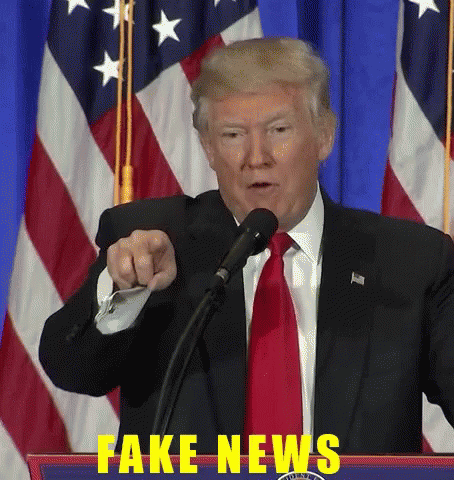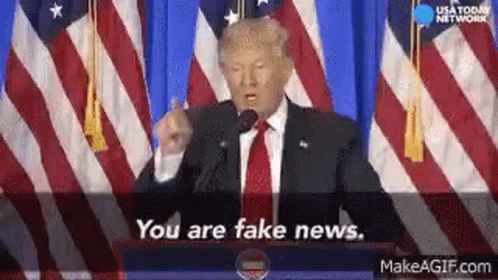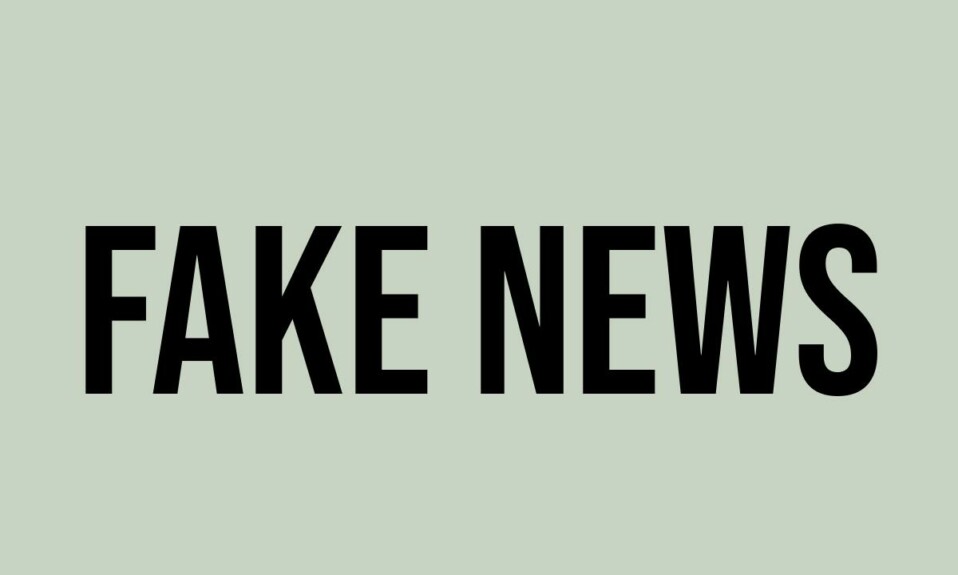What Does Fake News Mean?
The term fake news refers to news outlets that present themselves as real but are actually false. It encompasses fabricated stories that are designed to appear genuine and gain traction on social media platforms like Facebook and Twitter. Fake news can take various forms, including outright lies, omission of facts, deceptive structure, selective outrage, emotional manipulation, and hidden retractions. The rise of fake news became particularly prominent during the 2016 race for POTUS, where numerous false stories were released to deceive people and promote conspiracy theories. This increase in fake news can be attributed to the decline of traditional newspapers and journalists, as well as the willingness of social media users to share stories without verifying their accuracy. While fake news stories, such as those from satirical sources like The Onion, have existed for years, the prevalence of manipulated media, such as deepfakes, poses a significant threat. Deepfakes involve superimposing a digital face onto someone else’s body, creating realistic but fabricated content. The existence of deepfakes is being used as an accusation and an excuse by those hoping to discredit reality and avoid accountability, a phenomenon known as the liar’s dividend. Manipulated media, including deepfakes, can further undermine people’s reliance on concepts like truth and evidence. The rapid and constant influx of content on platforms like TikTok can eliminate nuance and reinforce individuals’ existing beliefs. While much of the manipulated content on social media is poorly fabricated, the technologies that can alter and synthesize media with finesse are becoming increasingly accessible. Conspiracy theorists have even shared official White House videos on TikTok, claiming that President Biden is a deepfake. The spread of manipulated media is difficult to quantify, but experts are concerned that as the technologies enabling manipulation become more accessible, the manipulations themselves will become more widespread and harder to detect. Tech companies have been developing tools to identify manipulations like deepfakes, and some platforms have pledged to remove or label harmful manipulated content. However, moderating the spread of manipulated media is challenging, and prolonged exposure to such content can heighten polarization and erode viewers’ ability to differentiate truth from fiction. In conclusion, fake news and manipulated media present significant challenges to the reliability of information and people’s capacity to discern truth. The prevalence of fake news and the emergence of manipulated media, including deepfakes, underscore the importance of critical thinking, fact-checking, and responsible consumption of news and information.



What Does Fake News Mean From a Girl?
When a girl uses the term fake news, she is likely referring to the same meaning as everyone else. Fake news refers to news outlets or stories that present themselves as real but are actually false. Girls use this term similarly to boys and people of all genders.
Here are some key points to consider:
- Specific meaning from a girl: Girls use the term fake news to describe false or misleading information presented as news.
- How girls use it: Girls may use fake news in conversations with friends, on social media platforms, or in discussions about current events and politics.
- How to reply: If someone mentions fake news in a conversation with you, it’s important to critically evaluate the information and fact-check if necessary. You can respond by expressing your skepticism or sharing reliable sources that debunk the false information.
It’s worth noting that while fake news is a term used by people of all genders, girls may have unique perspectives and experiences related to misinformation and its impact. Girls, like everyone else, should be encouraged to engage in critical thinking and media literacy to navigate the complex landscape of information online.
Example 1:
- Girl A: Did you see that article about the new diet trend?
- Girl B: Yeah, it’s total fake news! I did some research and found out it’s not backed by any scientific evidence.
Example 2:
- Girl: I can’t believe people are falling for that fake news story about aliens landing on Earth. It’s clearly a hoax!
Example 3:
- Girl A: Did you hear about that celebrity scandal?
- Girl B: Yeah, but I think it’s just fake news. Those gossip magazines always make up stories to sell more copies.
Example 4:
- Girl: My mom keeps sharing those conspiracy theories on Facebook. I have to keep reminding her that they’re fake news and not to believe everything she reads.
Example 5:
- Girl A: Did you see that viral video claiming to show a ghost?
- Girl B: Yeah, it’s definitely fake news. I saw a debunking video that explained how it was just special effects.
What Does Fake News Mean From a Guy?
When a guy uses the term fake news, he is likely referring to the same meaning as everyone else. Fake news refers to news outlets or stories that present themselves as real but are actually false. Guys use this term similarly to girls and people of all genders.
Here are some key points to consider:
- Specific meaning from a guy: Guys use the term fake news to describe false or misleading information presented as news.
- How guys use it: Guys may use fake news in conversations with friends, on social media platforms, or in discussions about current events and politics.
- How to reply: If someone mentions fake news in a conversation with you, it’s important to critically evaluate the information and fact-check if necessary. You can respond by expressing your skepticism or sharing reliable sources that debunk the false information.
It’s worth noting that while fake news is a term used by people of all genders, guys may have unique perspectives and experiences related to misinformation and its impact. Guys, like everyone else, should be encouraged to engage in critical thinking and media literacy to navigate the complex landscape of information online. So next time a guy mentions fake news, make sure to fact-check and keep the conversation grounded in truth!
Example 1:
- Guy 1: Did you hear about that new study claiming that eating pizza every day is actually good for you?
- Guy 2: No way! That’s gotta be some serious fake news. I mean, as much as I’d love for it to be true, I don’t think my doctor would agree.
Example 2:
- Guy 1: Bro, did you see that viral video of a dog playing the piano?
- Guy 2: Yeah, it was hilarious! But I’m pretty sure it’s just some clever editing and fake news. Dogs are talented, but I don’t think they’ve mastered the piano just yet.
Example 3:
- Guy 1: Check out this article I found that says drinking beer can make you smarter.
- Guy 2: Seriously? That’s some next-level fake news right there. I don’t think chugging a six-pack is gonna turn anyone into a genius.
Example 4:
- Guy 1: Dude, did you hear that scientists discovered a new species of unicorn in the Amazon rainforest?
- Guy 2: Haha, nice try! But I’m not falling for that fake news. Unicorns are mythical creatures, not real animals.
Example 5:
- Guy: Bro, did you see that headline about aliens landing in Times Square?
- Girl: Wait, what? That’s crazy!
- Guy: Haha, gotcha! It’s just some good ol’ fake news. Aliens haven’t invaded Earth… yet.
Origin of Fake News
The term “fake news” refers to news outlets that present themselves as real but are actually false. It encompasses fabricated stories that are designed to appear genuine and gain traction on social media platforms like Facebook and Twitter. The rise of fake news became particularly prominent during the 2016 race for POTUS, where numerous false stories were released to deceive people and promote conspiracy theories. This increase in fake news can be attributed to the decline of traditional newspapers and journalists, as well as the willingness of social media users to share stories without verifying their accuracy.
While fake news stories, such as those from satirical sources like The Onion, have existed for years, the prevalence of manipulated media, such as deepfakes, poses a significant threat. Deepfakes involve superimposing a digital face onto someone else’s body, creating realistic but fabricated content. The existence of deepfakes is being used as an accusation and an excuse by those hoping to discredit reality and avoid accountability, a phenomenon known as the liar’s dividend.
Manipulated media, including deepfakes, can further undermine people’s reliance on concepts like truth and evidence. The rapid and constant influx of content on platforms like TikTok can eliminate nuance and reinforce individuals’ existing beliefs. While much of the manipulated content on social media is poorly fabricated, the technologies that can alter and synthesize media with finesse are becoming increasingly accessible.
Conspiracy theorists have even shared official White House videos on TikTok, claiming that President Biden is a deepfake. The spread of manipulated media is difficult to quantify, but experts are concerned that as the technologies enabling manipulation become more accessible, the manipulations themselves will become more widespread and harder to detect.
Tech companies have been developing tools to identify manipulations like deepfakes, and some platforms have pledged to remove or label harmful manipulated content. However, moderating the spread of manipulated media is challenging, and prolonged exposure to such content can heighten polarization and erode viewers’ ability to differentiate truth from fiction.
In conclusion, fake news and manipulated media present significant challenges to the reliability of information and people’s capacity to discern truth. The prevalence of fake news and the emergence of manipulated media, including deepfakes, underscore the importance of critical thinking, fact-checking, and responsible consumption of news and information. The origin of the term “fake news” is not clear, but it has become widely used to describe false news outlets that pretend to be real.
Frequently Asked Questions
Slangs similar to Fake News
Misinformation, fabricated stories, false information, deception, and manipulated media are similar to fake news because they all involve presenting false or misleading information to deceive or mislead others. These terms describe different aspects and methods of spreading false information, highlighting the need for critical thinking and responsible consumption of news and information.
Is Fake News A Bad Word?
No, “fake news” is not a bad word or vulgar word. It is a term used to describe news outlets that pretend to be real but are actually fake. It refers to false stories that are crafted to appear real and gain attention on social media. While the term is often used to criticize biased or misleading news, it is not inherently vulgar or offensive.
Is Fake News a Typo or Misspelling?
Fake news is not a misspelling or typo; it refers to news outlets that present themselves as real but are actually false, often using various deceptive techniques to appear genuine and gain traction on social media platforms.





